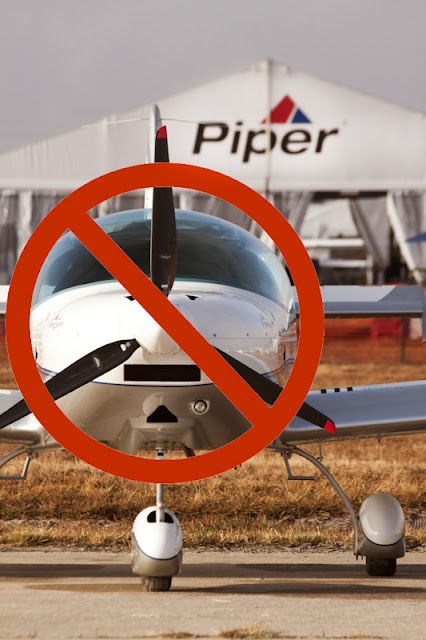 I'd call this Day 4 but rush-deadline work for the mag intervened after the last day at Sebring so just getting to it now.
I'd call this Day 4 but rush-deadline work for the mag intervened after the last day at Sebring so just getting to it now.The Sebring experience gets better every year, I believe precisely because Bob Woods keeps it consistently valuable without tricking it up with a lot of extraneous booths selling things like Miracle Kitchen Knife or iPhone WonderMuffin Pocket Baker and the like: it's an LSA show, pure and simple, and a great opportunity for folks to crawl out from wherever winter is tap-dancing on their heads and let them see, compare, fly and even buy aircraft and peripheral stuff.
 |
| ALTO 100 |
I'd say from everybody I talked to, optimism was rekindled that 2011 will be better than the last -- a real toughie.
Let's wrap up my highlights, then look at the 2011 Florida LSA Tour that launched right after Sebring.
ALTO 100: Last year, Ron Corbi and Dan Coffey vowed to bring an Americanized, more affordable S-LSA to our shores and did just that with this retooled Czech design, newly S-LSA certified. Their "pre-emptive maintenance" approach looks to eliminate those features that most tend to wear out in LSA. American-made Matco wheels and brakes, bucked rivets instead of pop rivets in high-stress areas and so on. The Alto features a Vertical Power electronic electrical system, Approach Hub avionics wiring and a Dynon SkyView glass panel, all for under $100,000, should attract attention. It's a cute airplane too.
 | |
| KITFOX SUPER SPORT |
 |
| FK9 ELA |
HARDWARE DEPT: A couple more cool gadgets to talk about:
 |
| Watching the excellent wing-mounted video at Sebring |
 |
| DYNON'S Robt. Hamilton and 1 lb. Transponder unit |
The 2011 Florida LSA Tour: Take five top manufacturers to six Florida cities and you've got the gist of this clever and, we can hope, effective marketing effort. Cooked up by Bill Canino of Sport Air USA and American Legend Cub’s Dave Graham, (formerly with Gobosh), the idea targets one of America’s busiest aviation states. On the tours: Legend’s Cub, Flight Design’s CTLS, Sportair's Sting S3 and Sirius, the Rans S-19, and Jabiru’s J-230 joined the tour’s itinerary to Naples, Miami, Orlando, Spruce Creek, Leeward Air Ranch and Tallahassee.
If successful, tours like this could fill the gap until the LSA infrastructure reaches more fully across the country.
 | |||
| Dave Graham (lt.) Bill Canino (ctr.) and friends |
Telling anecdote: I spoke with a Cirrus SR-22 owner who was looking at every LSA there.
"I'm really impressed," said the mid-40s software engineer, "with the quality of these LSA. Once my teens are out of school, I'll probably buy one for my wife and I to take trips in. I didn't realize how well-built these airplanes are."
Sebring is done: Long live Sebring!
And thanks again to Bob Woods and his terrific group of volunteers.






































